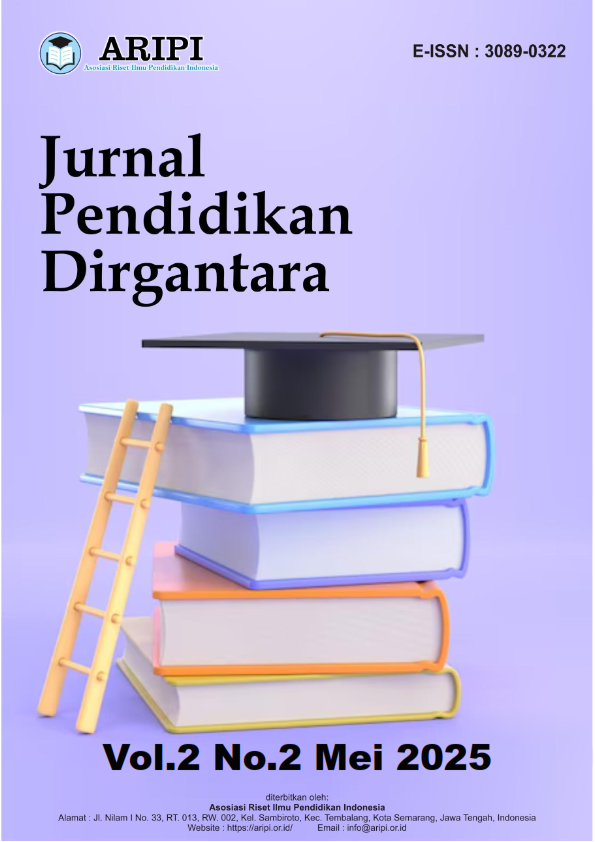Mengapa Siswa Takut Berbicara
DOI:
https://doi.org/10.61132/jupendir.v2i2.217Keywords:
Speaking Anxiety, Students, EducationAbstract
Speaking anxiety among students is a common phenomenon that affects their academic performance and personal development. This study aims to explore the reasons behind students' fear of speaking in various educational settings. Using a literature review method, this research examines previous studies related to psychological, social, and educational factors contributing to students’ reluctance to speak. The findings indicate that speaking anxiety is primarily caused by fear of making mistakes, low self-confidence, and negative social evaluations from peers or teachers. Additionally, classroom environment, teaching methods, and cultural influences also play a significant role in shaping students' willingness to speak. The impact of this fear extends beyond academic performance, affecting students' participation, self-expression, and future communication skills. Several strategies have been identified to reduce speaking anxiety, including fostering a supportive learning environment, encouraging positive reinforcement, and implementing interactive teaching methods. Educators are encouraged to create a more inclusive atmosphere that minimizes students' fear of judgment and enhances their confidence in speaking. This study contributes to the existing body of knowledge on students' speaking anxiety by summarizing key factors and offering practical implications for teachers, educators, and policymakers. Future research could further explore intervention programs that effectively address students' fear of speaking in different cultural and educational contexts.
References
Arlan, K., Zia Ul Hq, M., & Daddi, H. (2022). Ketakutan mahasiswa terhadap presentasi bahasa Inggris lisan. Jurnal Psikolinguistik Indonesia, 1(3), 90–95. https://ojs.fkip.unismuh.ac.id/index.php/ijp
Catur, N. Y., Yoes, N., Yusuf, C., Yulianto, W., & Maulida, I. (2023). Kecemasan berbicara bahasa Inggris pada mahasiswa: Tingkat dan penyebabnya. TLEMC, 7(2). http://jurnal.unsil.ac.id/index.php/tlemc/index
Dewa, I., Budayanti, A. A., Gede, I., Permana, Y., Canestra, N., & Putra, A. (2023). Kecemasan siswa dalam berbicara bahasa Inggris di kelas. Celtic: Jurnal Budaya, 10(2). https://doi.org/10.22219/celtic.v10i2
Gregersen, T., & Horwitz, E. K. (2002). Language learning and perfectionism: Anxious and non-anxious language learners' reactions to their own oral performance. The Modern Language Journal, 86(4), 562–570. https://doi.org/10.1111/1540-4781.00161
Haryanti, A. P., & Yuliana, R. (2024). Faktor psikologis yang mempengaruhi kecemasan siswa dalam berbicara bahasa Inggris. Jurnal Bahasa Inggris-Indonesia untuk Pendidikan dan Kebudayaan Bahasa Inggris, 13(2). https://doi.org/10.31000/globish.v7i2
Horwitz, E. K., Horwitz, M. B., & Cope, J. (1986). Foreign language classroom anxiety. The Modern Language Journal, 70(2), 125–132. https://doi.org/10.1111/j.1540-4781.1986.tb05256.x
MacIntyre, P. D., & Gardner, R. C. (1991). Methods and results in the study of anxiety and language learning: A review of the literature. Language Learning, 41(1), 85–117. https://doi.org/10.1111/j.1467-1770.1991.tb00677.x
Nuridzdzati, R. Y., & Akhiriyah, S. (2023). Menjelajahi kecemasan berbicara siswa: Kasus siswa berprestasi tinggi. Jurnal Pendidikan Bahasa dan Sastra Inggris (JELITA), 4(2), 2721–1916.
Purbaya, C., Mulyadi, & Puspita, H. (2024). Faktor penyebab kecemasan berbicara yang dihadapi siswa Indonesia selama praktik mengajar di Filipina. Wacana: Jurnal Penelitian Bahasa, Sastra dan Pengajaran, 22(1), 8–16. https://doi.org/10.33369/jwacana.v22i1.30282
Sahara, M., & Nurcholis, I. A. (2022). Penyebab glossophobia di kelas berbicara siswa. Jurnal Pengajaran Bahasa Inggris dan Pembelajaran Bahasa Inggris (TELLE), 2(3).
Suparlan. (2021). Faktor-faktor yang menyebabkan kecemasan berbicara pada siswa. JOLLT Journal of Languages and Language Teaching, 9(2), 160. https://doi.org/10.33394/jollt.v%vi%i.3321
Tristanti, D. A., & Wariyati. (2023). Kecemasan berbicara di depan publik dalam bahasa Inggris pada mahasiswa jurusan pendidikan bahasa Inggris. Education & Learning, 3(1), 41–49. https://doi.org/10.57251/el.v3i1.664
Tsiplakides, I., & Keramida, A. (2009). Helping students overcome foreign language speaking anxiety in the English classroom: Theoretical issues and practical recommendations. International Education Studies, 2(4), 39–44. https://doi.org/10.5539/ies.v2n4p39
Umisara, E., Faridi, A., & Yulianto, H. J. (2021). Evaluasi faktor psikologis yang mempengaruhi kecemasan siswa dalam berbicara bahasa Inggris. EEJ, 11(4), 496–505. http://journal.unnes.ac.id/sju/index.php/eej
Young, D. J. (1990). An investigation of students’ perspectives on anxiety and speaking. Foreign Language Annals, 23(6), 539–553. https://doi.org/10.1111/j.1944-9720.1990.tb00424.x
Downloads
Published
How to Cite
Issue
Section
License
Copyright (c) 2025 Jurnal Pendidikan Dirgantara

This work is licensed under a Creative Commons Attribution-ShareAlike 4.0 International License.




